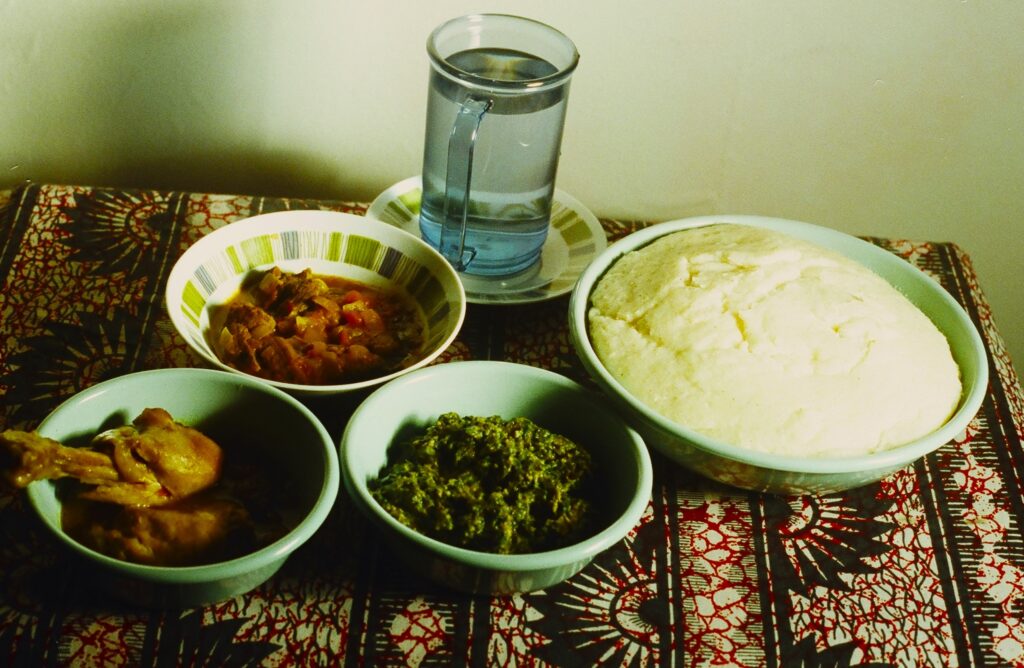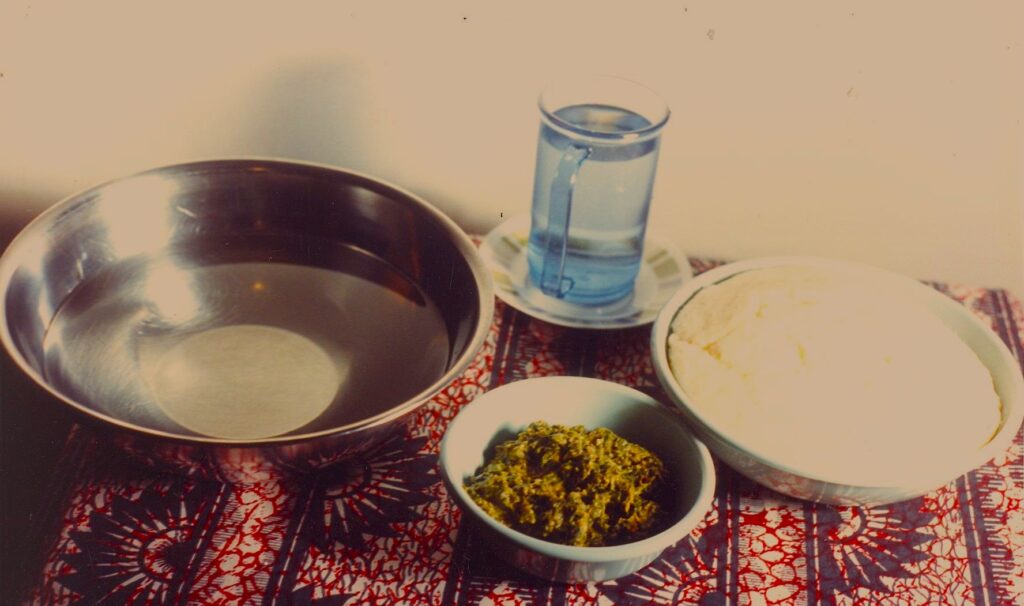by
Mwizenge S. Tembo, Ph. D.
Emeritus Professor of Sociology
One of the most significant aspects of the Zambian staple meal by which the sima is ultimately identified with is what in English might be called the “relish”. The relish is an English somewhat poor equivalent or translation, which obviously, does not precisely reflect or capture what Zambians often realize is the very fundamental and transcending essence of the dish. The relish is a second dish that is always and without exception served with the sima. It has many indigenous equivalent names. Among the Tumbuka of Eastern Zambia it is known as dende, among the Ngoni and Chewa of Malawi and Eastern Zambia it is known as ndiyo or dende, and umunani among the Bemba speaking people of Northern Zambia and the Copperbelt Province.

The dende second dish which is always served with sima is often cooked from domestic and wild meats that include beef, goat, mutton, deer, buffalo, elephant, warthog, wild pig, mice, rabbits or hare, antelope, turtle, alligator or crocodile, monkey, chicken eggs. Green vegetables include domestic or garden grown like collard greens, known as rape in Zambia, cabbage, pumpkin and squash leaves, pea leaves, cassava leaves, bean leaves, kabata, nyazongwe, or bilozongwe leaves. There are numerous wild green vegetables that include katambalala, chekwechekwe, katate, lumanda, and numerous others, which are all, referred to by the very well known generic name of delele or thelele among people of Eastern Zambia and Malawi. There are anywhere from 20 to 30 of this group of thelele vegetables.
Because the delele and other groups of vegetables are always so plentiful and easily available in the natural environment, it is one dende that is frequently held in contempt. In rural Zambia the daily conversation will often focus on how difficult it is to get dende. Someone will invariably complain that they have been eating delele for three straight days. Since any type of meat protein is the most scarce, it is the most valued or desired. Infact there is a special term that is used for that irresistible desire or yearning for meat which is known as nkhuli in Eastern Zambia and Malawi.

The pair of sima and dende is therefore the most significant Zambian meal. One is rarely possible without the other. The two are like Siamese twins, the left and the right hand, student and teacher, husband and wife, male and female or mitt and glove in American baseball parlance. Having one without the other is possible but is always regarded as a serious anomaly or oddity. If the cook induces the condition of eating sima or dende on its own, it would be regarded as lack of proper planning. If the diners induce the condition, they would be regarded as having poor judgement or being immature.
Other types of madende include fish, peanuts, peanut butter (chibwabwa or chimphonde), numerous types of wild mushrooms, and many varieties of beans and peas.
One excellent reason for why sima and dende always go together is that they complement each other. Sima eaten by itself is rather relatively plain and bland. Although if you are an experienced, seasoned, and traditional eater of the meal, the sima has its own subtle differences in taste and flavor depending on the type of mealie-meal and how it was cooked.

In fact when Westerners who visit Zambia first eat sima their typical reaction is: “God, why don’t you add butter, sugar or something to give it some taste or flavor?” But that is exactly the beauty and deeply acquired taste and appreciation of sima in that it is the dende, dende or relish second dish that gives it the unique taste or deliciousness. The sima therefore accentuates the dende and the reverse is also true. Eating the sima by itself will fill the eater but without any taste ecstasy. Eating the dende by itself might be gratifying but the individual will not feel full or satiated. Eating sima by itself is known as kusoza among the Tumbuka people of Zambia. Kusinkha refers to eating dende or relish by itself.